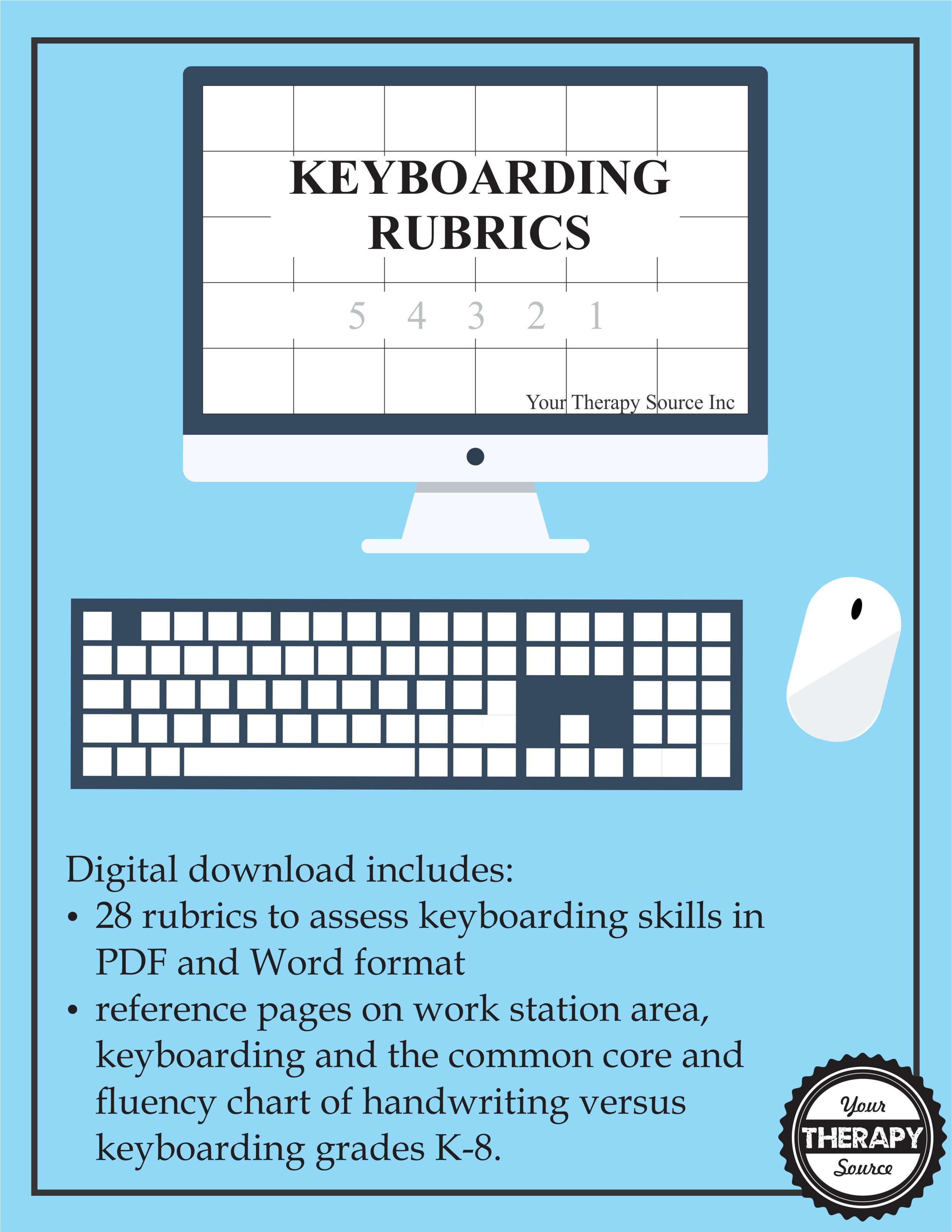Keyboarding and Occupational Therapy

As our schools become more and more technology based with 1:1 devices, keyboarding has become an even more important skill for ALL students to master and this skill is sometimes addressed in occupational therapy. When students struggle with handwriting such as decreased legibility or slow writing speed, Occupational Therapists may recommend using computers and keyboarding. In order for keyboarding to replace handwriting skills, the students must become proficient at using the computer and typing.

When Is Keyboarding Taught?
According to the Common Core Standards, keyboarding is first required in the third grade to produce and publish writing. The first standard states the following:
CCSS.ELA-LITERACY.W.3.6
corestandards.org
With guidance and support from adults, use technology to produce and publish writing (using keyboarding skills) as well as to interact and collaborate with others.
With the expectations gradually increasing in difficulty throughout elementary school. For example see below for keyboarding standards for fifth grade:
CCSS.ELA-LITERACY.W.5.6
CORESTANDARDS.org
With some guidance and support from adults, use technology, including the Internet, to produce and publish writing as well as to interact and collaborate with others; demonstrate sufficient command of keyboarding skills to type a minimum of two pages in a single sitting.
As the students get older, the expectations increase with sixth grade recommending three pages in a single sitting. Therefore, in order to meet written productivity standards, keyboarding is an important skill for ALL students to learn. For students who receive occupational therapy, teaching keyboarding skills and practice time is critical.
Teaching Keyboarding Skills – What Works Best?
There are many programs and curriculum available to help students learn keyboarding, too many to list here. When working on keyboarding skills in occupational therapy, there are informal free web-based activities and formal curriculums such as formal Keyboarding Without Tears®.
A recent study investigated the effectiveness of a developmentally based curriculum, Keyboarding Without Tears®, as compared to free web-based activities for learning keyboarding skills in students (general and special education) in grades kindergarten through fifth.
The researchers concluded that learning the developmentally based curriculum demonstrated improved speed and accuracy, especially in the upper elementary grades and improved keyboarding method in the lower elementary grades as compared to the free web-based activities.
Reference: Donica, D. K., Giroux, P., & Faust, A. (2018). Keyboarding instruction: Comparison of techniques for improved keyboarding skills in elementary students. Journal of Occupational Therapy, Schools, & Early Intervention, 11(4), 396-410.
How Do You Measure Keyboarding Skills in Occupational Therapy?
Students who need help with keyboarding in occupational therapy, often may need goals or help in certain areas. Perhaps their posture needs improvement or their keyboarding speed. One way to track progress over time with keyboarding is using rubrics.
Rubrics are an excellent tool for school based therapists to utilize throughout the school year for ongoing assessment of a student’s skills. A rubric is a scoring guide to judge performance on a specific task. A skill is broken down into different components and a numerical value is given to each component. The performance is then scored by totaling the sum of the numerical values.
Here are 5 reasons why you should use rubrics for keyboarding in occupational therapy:
- A rubric informs the individual of what is expected of a task. It clarifies step by step what is required for proficiency. The student will know all the steps that are needed to complete a task.
- It provides a standard to assess the quality of how a task is completed.
- The score on a rubric can determine if changes (improvements or regression) have occurred over time. It is a great tool to use after a long weekend, absences or school vacation to determine if regression has occurred to justify summer services.
- It can help increase the consistency of scoring. Instead of documenting minimal, moderate or significant progress, you can document an actual score to have a more quantitative measure.
- Use a rubric to compare the abilities of a student with a peer to determine if the student’s skills are functional.
Keyboarding Rubrics digital download includes 28 rubrics to assess keyboarding skills in PDF and Word format. Also includes 3 references pages on work station area, keyboarding and the common core and fluency chart of handwriting versus keyboarding K-8.

Read more about keyboarding:
Keyboarding and Motor Learning
Read results from the handwriting versus keyboarding survey.
Download FREE Keyboarding Words Per Minute Goal Tracker.
Read more on workstation positioning.
Read research on Manuscript, Cursive or Keyboarding.



